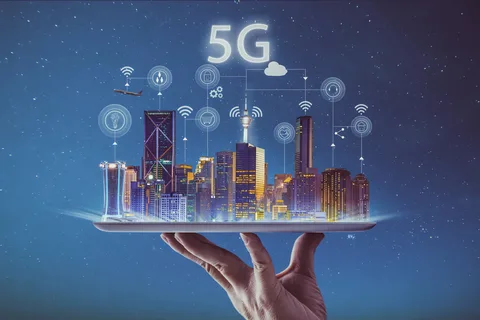I. Introduction
The advent of 5G technology has ushered in a new era of connectivity, transforming the way we work and communicate. As remote work becomes a ubiquitous trend, this article explores the profound impact of 5G on remote work, unraveling the benefits, challenges, and the future landscape of the digital workforce.
II. Faster and More Reliable Connectivity
One of the most significant impacts of 5G on remote work is the unparalleled speed and reliability it offers. With blazing-fast internet connectivity, tasks that once demanded high bandwidth, such as video conferencing and large file transfers, become seamless, enhancing productivity for remote workers.
III. Enhanced Video Conferencing and Collaboration
5G’s low latency and high data transfer rates elevate the quality of video conferencing and collaboration tools. Remote workers experience clearer audio, high-definition video, and real-time collaboration on shared documents, fostering a virtual work environment that rivals in-person interactions.
IV. Augmented Reality (AR) and Virtual Reality (VR) Integration
5G’s capabilities open the door to the integration of Augmented Reality (AR) and Virtual Reality (VR) in remote work scenarios. This immersive technology enables remote workers to participate in virtual meetings, collaborate on projects, and engage in training sessions as if they were physically present.
V. Increased Flexibility and Mobility
Remote work powered by 5G isn’t confined to a fixed location. The increased mobility allows workers to seamlessly transition between home, co-working spaces, and even outdoor environments without compromising on connectivity or data speed, providing a new level of flexibility.
VI. Internet of Things (IoT) Enablement
5G facilitates the proliferation of Internet of Things (IoT) devices in the remote work landscape. From smart home offices to connected devices that optimize energy consumption, 5G empowers a network of seamlessly integrated technologies that enhance the overall remote work experience.
VII. Cybersecurity Challenges and Solutions
While 5G brings a myriad of benefits, it also introduces new cybersecurity challenges. The increased number of connected devices and higher data speeds require robust security measures. This section explores the potential risks and solutions to ensure a secure remote work environment in the 5G era.
VIII. Accessibility and Inclusivity
5G’s impact extends to improving accessibility and inclusivity in remote work. With faster internet speeds, individuals in remote or underserved areas gain better access to job opportunities, education, and resources, fostering a more inclusive global workforce.
IX. Transitioning Industries and Job Roles
Certain industries and job roles undergo significant transformations with the integration of 5G in remote work. From healthcare professionals conducting remote patient consultations to field technicians utilizing augmented reality for remote maintenance, 5G reshapes the dynamics of various professions.
X. Balancing Work-Life Integration
The increased connectivity and flexibility facilitated by 5G raise questions about work-life integration. This section explores the challenges of setting boundaries in a digitally connected world and offers insights into maintaining a healthy balance between work and personal life for remote workers.
XI. Future Trends and Innovations
Looking ahead, the article delves into future trends and innovations in remote work fueled by 5G. From advancements in edge computing to the integration of artificial intelligence, the future promises continuous evolution in the way we collaborate and work remotely.
XII. Conclusion
In conclusion, the impact of 5G on remote work is transformative, ushering in an era of unparalleled connectivity, collaboration, and flexibility. As we navigate this digital frontier, the symbiotic relationship between 5G technology and remote work is poised to redefine the landscape of the modern workplace.
FAQs
- How does 5G enhance video conferencing for remote work? 5G’s low latency and high data transfer rates elevate the quality of video conferencing, providing clearer audio, high-definition video, and real-time collaboration on shared documents for remote workers.
- What role does 5G play in the integration of AR and VR in remote work? 5G’s capabilities enable the seamless integration of Augmented Reality (AR) and Virtual Reality (VR) in remote work scenarios, offering immersive experiences for virtual meetings, collaboration, and training sessions.
- How does 5G impact cybersecurity in remote work? While 5G brings benefits, it introduces new cybersecurity challenges. This section explores potential risks and solutions to ensure a secure remote work environment in the 5G era.
- How does 5G improve accessibility and inclusivity in remote work? With faster internet speeds, 5G improves accessibility for individuals in remote or underserved areas, providing better access to job opportunities, education, and resources, fostering a more inclusive global workforce.
- What future trends can we expect in remote work with the integration of 5G? The article explores future trends and innovations, from advancements in edge computing to the integration of artificial intelligence, promising continuous evolution in the way we collaborate and work remotely.





